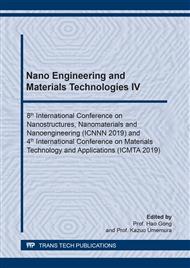p.36
p.44
p.50
p.55
p.61
p.67
p.73
p.81
p.86
Research on Additive Manufacturing Technology in the Field of Mold Repair
Abstract:
With the rapid development of modern industry, mold as a basic hardware facility has become one of the important factors affecting the development of modern industry. The surface quality and working reliability of the mold have a direct impact on the quality of the part. Faced with a large number of failed molds in industrial production, fast and reliable mold repair technology can realize mold reuse under the premise of ensuring mold performance. It effectively shortens the construction period, saves costs and reduces mold waste. The article outlines the characteristics of wire and arc additive manufacturing technology, selective electron beam melting technology and laser cladding technology in additive manufacturing technology. The application characteristics of three additive manufacturing technologies in mold repair are analyzed. The application prospect of laser cladding technology in mold repair is pointed out. In view of the improved work reliability, the direction of laser cladding technology in the field of mold repair can be prospected.
Info:
Periodical:
Pages:
61-66
Citation:
Online since:
May 2020
Authors:
Price:
Сopyright:
© 2020 Trans Tech Publications Ltd. All Rights Reserved
Share:
Citation:


